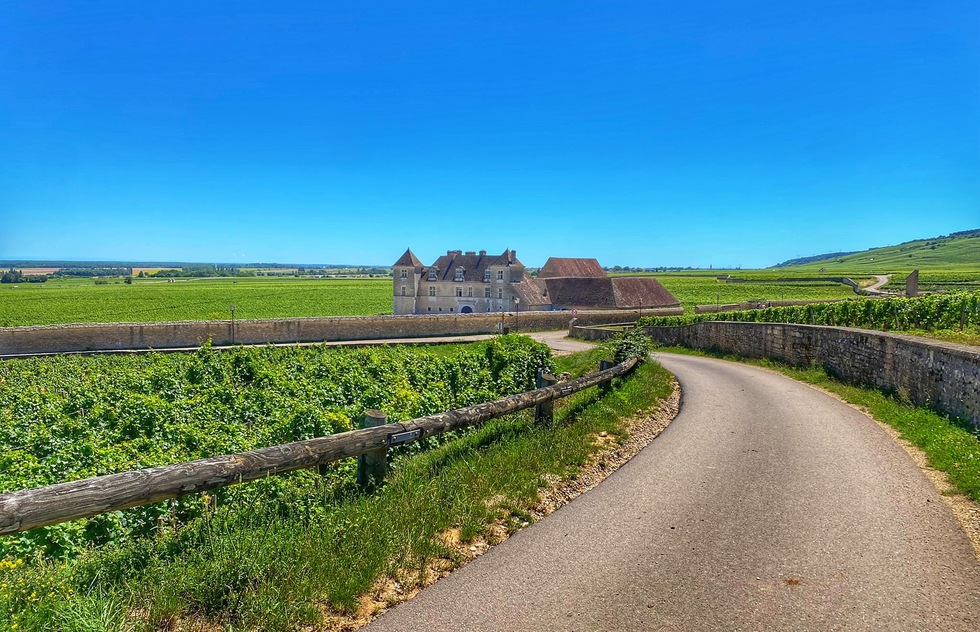Leave Dijon on A38 heading northwest on a good road in the Vallée de l'Ouche, alongside the Burgundy Canal. At pont de Pany, on the outskirts of Sombernon, exit onto a local highway (D905) and continue northwest. On your left lies the lake of Grosbois. The scenery is typical of agricultural France, with isolated farms, woods, and pastures.
Pass through Vitteaux; just before the next village, Posanges, stands a feudal château. You can't visit it, but it's worth a picture. Continue on D905 until you come to a railroad crossing. On your left is another old castle, now part of a private farm. The next village you reach along D905 is Pouillenay. Follow the signs for a short detour to the hamlet of Flavigny-sur-Ozerain. Park your car outside the walls and walk through the old streets.
Leave Flavigny and follow signs for a few miles on country roads to Alise-Ste-Reine, the site of what was once Alésia, the camp of the Gallic chieftain Vercingetorix. Alise-Ste-Reine was named after a local Christian who was decapitated for refusing to marry a Roman governor. In the town center stands a statue of Vercingetorix crafted by Millet. You can explore the ruins of a Roman-Gallic town, Les Fouilles d'Alésia, and Le Musée d'Alésia, which sit side by side on the rue de l'Hôpital (tel. 03-80-96-96-23; https://www.alesia.com/) at the edge of the village. The museum and ruins are open daily June 30 through August from 9am to 7pm, March 22 to June 29, and September 1 to November 11 from 10am to 5pm. A combination ticket costs 6€ for adults, 4.50€ for students and children 6 to 18, and is free for children 5 and under.
After Alise-Ste-Reine, you can head back to the village of Les Laumes, a railroad center. Before entering the village, make a U-turn to the right and take N454 to Baigneux-les-Juifs. After the village of Grésigny, you'll see a farm-fortress surrounded by water on your left.
Go 1.5km (1 mile) farther and turn right toward the Château de Bussy-Rabutin (tel. 03-80-96-00-03). Roger de Rabutin ridiculed Louis XIV's court, for which he spent 6 years in the Bastille. The château, with two towers, has survived mostly intact. The gardens and park are attributed to Le Nôtre. It's open Tuesday to Sunday from 9:15am to noon and 2 to 5pm. Admission is 10€ for adults, 7€ for students 18 to 25, and free for those 17 and under.
Return to Grésigny, turn right before the farm-fortress, and then go left. Outside the village, turn right toward Menetreux Le Pitois. You're off the main road and into the real countryside. Back on D905, head to Montbard, hometown of George-Louis Leclerc, comte de Buffon, one of the 18th century's great naturalists and author of L'Histoire Naturelle, a 44-volume encyclopedia. The scientist's home is open to visitors, and a minimuseum, Musée Buffon (tel. 03-80-92-50-42), is dedicated to his life and work. It's open only from April to October Wednesday through Sunday from 10am to noon and 2 to 5pm. The Hôtel de l'Ecu, 7 rue Auguste-Carré (tel. 03-80-92-11-66; www.hotelecu-montbard.fr/en/), serves moderately priced meals in an 18th-century postal relay station; menus cost 21€ to 42€. The inn also rents 23 simply furnished yet comfortable bedrooms.
Continue east 9.5km (6 miles) to Marmagne, then turn left on D32 and head toward the Abbaye de Fontenay (tel. 03-80-92-15-00). Isolated in a valley, Fontenay is one of Europe's most unspoiled 12th-century Cistercian abbeys. It is open mid-November to March daily 10am to noon and 2 to 5pm; April to mid-November daily 10am to 6pm. Admission is 12€ for adults, 6€ for children and students, and free for children 6 and under.
Note: This information was accurate when it was published, but can change without notice. Please be sure to confirm all rates and details directly with the companies in question before planning your trip.









